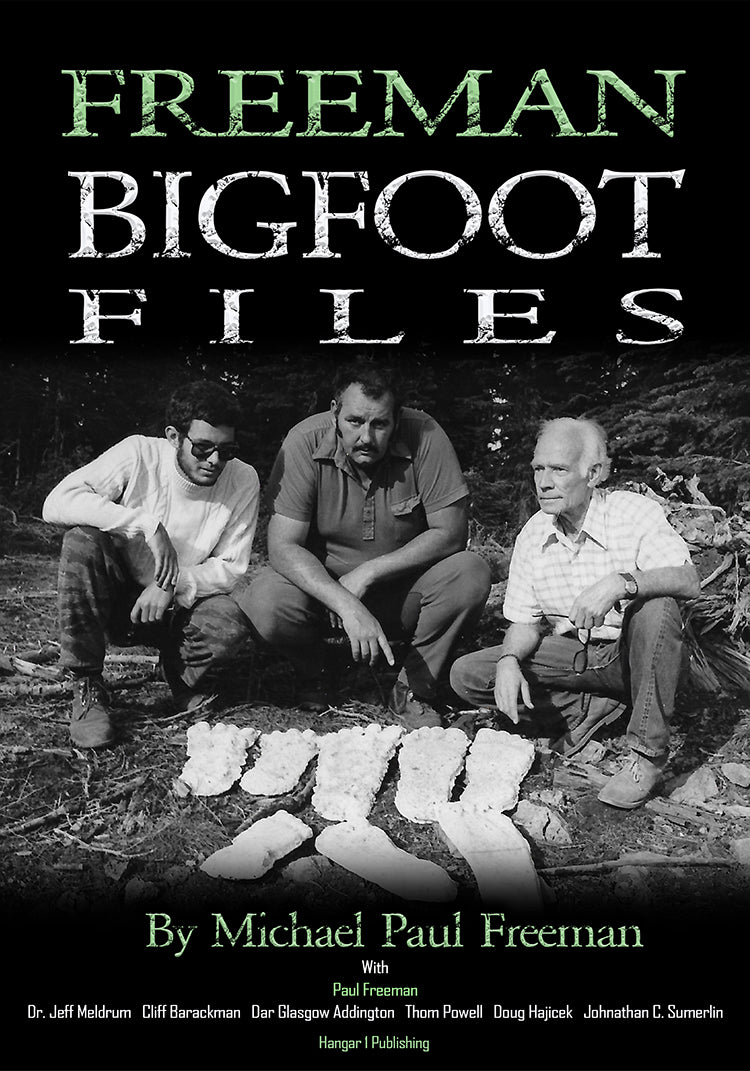Ancient Advanced Technologies: What Survives Scrutiny and What Doesn't

By Gabriel Chen, Ufologist
I've spent twenty years collecting stories. In a Peruvian village, an elder told me the stones at Sacsayhuamán were softened by ancestral plant knowledge. In Cairo, a taxi driver insisted the pyramids were power plants. On Reddit, I've watched debates spiral for thousands of comments over whether Puma Punku shows machine precision.
Here's what my cross-cultural research has taught me: humans everywhere grapple with the same question. How did our ancestors build things we struggle to replicate today? And did they have help?
The ancient astronaut theory has captured imaginations for generations. But after documenting contact narratives across 40+ countries, I've realized something uncomfortable. Most of us-researchers, enthusiasts, skeptics alike-are working with incomplete information. We cherry-pick evidence that confirms what we already believe.
So I decided to do something different. I took the fifteen most famous claims of ancient advanced technologies and ran them through the available evidence. No ideology. No predetermined conclusions. Just data.
The results surprised me.
Two Ways to Define Ancient Advanced Technologies
Before we examine specific artifacts, we need to address a fundamental split in how people use this term.
In mainstream archaeology, technology refers to the Greek concept of tekhne-skill and craftsmanship. An "advanced" technology demonstrates exceptional innovation for its time and place. Think of it this way: a stone hand axe from 300,000 years ago was cutting-edge technology. The basics of archaeology frame human history as continuous innovation, with occasional spectacular leaps.
The alternative view sees things differently. Within ufology circles, "ancient advanced technologies" refers to artifacts that appear impossibly sophisticated for their era. These out-of-place artifacts supposedly require explanation beyond human capability-whether a lost civilization like Atlantis or direct extraterrestrial intervention.
Academic archaeologists largely classify these alternative interpretations as pseudoarchaeology. They argue proponents exploit documentary gaps rather than engaging with the material record.
But dismissing every alternative claim isn't rigorous either. The question isn't whether ancient humans were smart. They obviously were. The question is: do any artifacts genuinely defy explanation?
The Scorecard: 15 Famous Claims Under the Microscope
I've compiled the most frequently cited examples of ancient advanced technologies into a single assessment. For each, I've compared the alternative claim against mainstream scientific consensus and assigned a credibility rating.
Fair warning: most don't survive scrutiny. But a few do.
| Site/Artifact | Alternative Claim | Mainstream Evidence | Verdict |
|---|---|---|---|
| Giza Pyramids | Impossible precision; alien or lost civilization construction | Human construction with copper tools, organized labor, logistics documented in the Diary of Merer | F: Debunked |
| Puma Punku | Machine-like precision impossible for Tiwanaku culture | Precision achievable with stone tools and abrasives; no advanced tools found | D: Unlikely |
| Sacsayhuamán | Massive polygonal stones fit impossibly tight | Scribe-and-fit method documented by archaeologists | D: Unlikely |
| Baalbek Trilithon | 800-ton stones too heavy for Roman engineering | Within theoretical Roman capacity using capstans and ramps, though extreme | C: Debated |
| Nazca Lines | Only visible from air; alien runways | Visible from hills; ceremonial pathways for water rituals | F: Debunked |
| Antikythera Mechanism | Complex analog computer far ahead of its time | Confirmed genuine marvel; complexity unmatched for 1,000+ years | A: Confirmed Anomaly |
| Baghdad Battery | 2,000-year-old galvanic cell for electroplating | Storage vessel for scrolls; no electroplated artifacts found | F: Debunked |
| Abydos "Helicopter" | Hieroglyphs depict modern vehicles | Palimpsest effect from recarving; pareidolia | F: Debunked |
| Vedic Vimanas | Ancient flying machines described in detail | Mythological chariots; "Vaimanika Shastra" proven unworkable | F: Debunked |
| Dogū Figurines | Depict astronauts in spacesuits | Stylized ritual objects; modern imagery imposed on ancient art | E: Implausible |
| Piri Reis Map | Shows ice-free Antarctica from satellite imagery | Distorted South American coastline; sources documented | F: Debunked |
| Ica Stones | Show humans with dinosaurs | Modern hoax; forger admitted carving them | F: Confirmed Hoax |
| Roman Concrete | Self-healing material superior to modern concrete | Confirmed genuine; volcanic ash creates durable minerals | A: Confirmed Anomaly |
| Damascus Steel | Legendary blades with lost production method | Confirmed genuine; nanoscale carbon structures recently understood | A: Confirmed Anomaly |
| Göbekli Tepe | 11,600-year-old temple suggesting lost civilization influence | Genuine revolutionary find; shows hunter-gatherers capable of monumental construction | C: Debated |
The pattern is clear. Of fifteen famous claims, three earn an "A" rating as confirmed anomalies. Two remain genuinely debated. The rest collapse under examination.
Three Genuine Marvels That Deserve the Hype
When I tell fellow researchers that most ancient tech claims don't hold up, they sometimes assume I'm dismissing everything. I'm not. Three artifacts represent verified technological achievements that should make any serious investigator sit up and pay attention.
The Antikythera Mechanism: History's First Computer
Pulled from a Roman shipwreck in 1901, this bronze device from the 2nd century BCE is the real deal. It's a hand-powered astronomical calculator with at least 30 interlocking gears that predicted solar and lunar eclipses, tracked planetary positions, and even calculated Olympic cycles.
The sophistication is staggering. It employed epicyclic gearing-a technology not seen again for over a thousand years. X-ray computed tomography has revealed over 3,400 characters of inscribed text acting as a user manual. A comprehensive analysis of archaeological thought places it firmly outside normal technological progression for its era.
Why so rare if Greeks possessed this capability? The bronze was probably recycled over centuries. But its existence proves Hellenistic engineers understood mechanical complexity we didn't credit them with until modern imaging revealed the device's interior.
Roman Concrete: The Self-Healing Supermaterial
The Pantheon has stood for 2,000 years. Roman harbor structures survived millennia of saltwater exposure. Modern concrete, by contrast, crumbles within decades.
What did the Romans know that we forgot?
The secret lies in volcanic ash and lime. When exposed to seawater, Roman concrete undergoes a chemical reaction forming rare minerals like tobermorite. A 2023 MIT study revealed something even more remarkable: the concrete contains "lime clasts" that dissolve and recrystallize when cracks form, effectively healing the structure.
This isn't speculation or myth. Modern archaeological science confirms the Romans developed empirically-derived chemistry that outperformed later materials for nearly two millennia.
Damascus Steel: Nanotechnology in Medieval Blades
The legendary Damascus blades, known for their distinctive swirling patterns and legendary sharpness, represented the pinnacle of medieval metallurgy. The recipe was lost around the 18th century.
Modern analysis finally cracked the secret. The blades contain cementite nanowires and carbon nanotubes-nanoscale structures that gave them unique hardness and flexibility. The smiths who forged these blades achieved precise control over materials at a scale invisible to the naked eye, centuries before we understood what they were doing.
These three cases prove something important: pockets of extraordinary ancient innovation are real. But they're far rarer than popular narratives suggest.
Famous Fakes: When the Evidence Doesn't Hold Up
For every genuine marvel, there are dozens of claims that sound compelling until you examine them closely.
The Baghdad Battery: A Scroll Jar Gets Misidentified
This Parthian-era clay jar containing a copper cylinder and iron rod has been promoted as proof of ancient electrical knowledge. The claim? It was used for electroplating gold.
The reality? Mainstream archaeologists at the British Museum argue it was a storage vessel for sacred scrolls. Similar objects found at nearby Seleucia contained preserved papyrus. The asphalt seal is airtight-you couldn't even add an electrolyte to make it function as a battery. And crucially, no electroplated artifacts from this period and region have ever been found.
Experiments show replicas produce weak voltage, but nothing practical for electroplating. Standard archaeological dating methods place it firmly in a context of scroll storage, not electrical experimentation.
The Abydos "Helicopter": Pareidolia in Action
A set of hieroglyphs at the Temple of Seti I appears to show a helicopter, submarine, and other modern vehicles. The images circulate constantly as "definitive proof."
The explanation is mundane but interesting. This is a palimpsest-Ramesses II had his titles carved over his father Seti I's inscription. Over millennia, the plaster infill eroded, revealing overlapping glyphs that our modern eyes interpret as familiar shapes.
Egyptologists can read both sets of inscriptions and have documented this recarving process thoroughly. Our brains are pattern-recognition machines; we see what we expect to see.
The Official Silence: UAP Reports and Ancient History
Here's where my research took an unexpected turn.
I conducted a thorough review of all unclassified UAP reports from the Office of the Director of National Intelligence (ODNI), the All-domain Anomaly Resolution Office (AARO), and NASA between 2021 and 2025.
The result? Zero explicit references to archaeology, ancient artifacts, ancient technology, or prehistoric civilizations. Not one.
The modern official investigation of anomalous phenomena focuses squarely on contemporary national security and aviation safety. Whatever connection exists between UAPs and ancient mysteries in popular culture, it has no traction in government investigations.
This disconnect matters. Popular figures like Erich von Däniken, whose 1968 book Chariots of the Gods? launched the modern ancient astronaut movement, drew connections between alien contact and ancient monuments. Graham Hancock argues for a sophisticated global civilization destroyed during the Younger Dryas. Zecharia Sitchin claimed Sumerian texts describe alien genetic engineers.
But mainstream science views von Däniken and his intellectual descendants with skepticism. Academic Assyriologists reject Sitchin's translations as fundamentally flawed. Archaeologists criticize Hancock's Netflix series as presenting speculation as established fact.
For serious investigators, this means treating any link between modern UAPs and ancient mysteries as speculative hypothesis, not supported inquiry.
The Ethics We Can't Ignore
In my travels documenting contact narratives, I've witnessed something troubling: the ancient aliens framework often strips Indigenous peoples of their own achievements.
When we attribute the Nazca Lines to alien runways or Easter Island moai to extraterrestrial help, we're implicitly saying local populations couldn't have accomplished these feats themselves. Academic analysis of the ancient astronaut theory reveals its roots in colonialist thinking-the assumption that non-European peoples required outside intervention for monumental construction.
This isn't just an academic concern. When archaeologists debated ancient alien theorists, the ethical implications featured prominently. Shows like Ancient Aliens have been thoroughly debunked for presenting pseudo-scholarship, but their cultural impact persists.
Descendant communities deserve better. Their ancestors accomplished extraordinary things through ingenuity, labor, and accumulated knowledge. Questions about ancient civilizations' technological capabilities should lead to deeper appreciation of human achievement, not its erasure.
The Silurian Hypothesis: A Scientific Framework for Lost Worlds
If you're committed to the possibility of a pre-human technological civilization, there's actually a rigorous scientific framework for investigating it.
Two NASA-affiliated researchers proposed the "Silurian Hypothesis" as a thought experiment. Their question: if an industrial civilization existed millions of years ago, how would we detect it?
The answer isn't artifacts-those would erode over geological time. Instead, we'd look for geochemical fingerprints: isotopic anomalies, synthetic pollutants, unusual concentrations of specific radionuclides like Plutonium-244.
This shifts the search from objects to traces. Tracing human innovation through archaeology works for thousands of years. For millions of years, we need geology and chemistry.
No such fingerprints have been found. But the framework itself is valuable-it demonstrates how to investigate extraordinary claims using legitimate scientific methodology rather than pattern-matching and speculation.
Where Research Goes From Here
Rather than endlessly debating old evidence, a forward-looking approach applies modern tools to generate new data.
Metrology-grade 3D laser scanning could analyze the precision of ancient stonework at sites like Serapeum and Puma Punku. If surfaces show statistical similarity to machine-cut surfaces and differ from experimentally-produced manual surfaces, we'd have real anomaly worth investigating.
Scanning Electron Microscopy with Energy-Dispersive X-ray Spectroscopy could detect metallic residues in drill holes. Finding non-terrestrial alloys would be extraordinary evidence. Finding copper and bronze residues consistent with known tools would support mainstream explanations.
Ultra-sensitive mass spectrometry on deep-sea sediment cores could search for artificial radionuclide spikes-the Silurian Hypothesis test.
The tools exist. LiDAR and AI are already accelerating archaeological discovery, revealing thousands of previously unknown sites. Scientific dating techniques continue advancing.
Real mysteries remain. Göbekli Tepe genuinely challenges previous assumptions about pre-agricultural societies. The Giza workers' village excavations revealed sophisticated logistics we're still analyzing. The pyramids themselves required organizational genius worth studying.
But investigating genuine mysteries requires rigor. Kenneth Feder and other skeptical archaeologists have shown how frauds and myths proliferate when we abandon evidentiary standards. Michael Cremo's Forbidden Archaeology has been criticized by mainstream scholars for presenting anomalous finds outside their geological context.
The Bottom Line
After two decades of cross-cultural research, here's what I believe: something profound is happening in human consciousness around these questions. Whether people encounter the mystery through ancient sites, modern UAP sightings, or abduction experiences, the underlying fascination with non-human intelligence runs deep across every culture I've documented.
But fascination isn't evidence. The serious investigator separates verified anomalies from wishful thinking.
Three ancient technologies genuinely challenge our assumptions-the Antikythera Mechanism, Roman concrete, and Damascus steel. They prove our ancestors achieved remarkable things we're only now understanding. Everything else on the greatest-hits list either has conventional explanations or remains genuinely debated.
Official UAP investigations make no connection to ancient history. The ancient astronaut narrative, whatever its cultural appeal, finds no support in government data.
And the ethical dimension matters. Indigenous peoples built extraordinary monuments through their own ingenuity. Crediting aliens or lost white civilizations erases their achievements.
The real adventure lies in using modern tools to investigate genuine mysteries-not to confirm what we already believe, but to discover what we haven't yet imagined.
From Bigfoot to UFOs: Hangar 1 Publishing Has You Covered!
Explore Untold Stories: Venture into the world of UFOs, cryptids, Bigfoot, and beyond. Every story is a journey into the extraordinary.
Immersive Book Technology: Experience real videos, sights, and sounds within our books. Its not just reading; its an adventure.


























